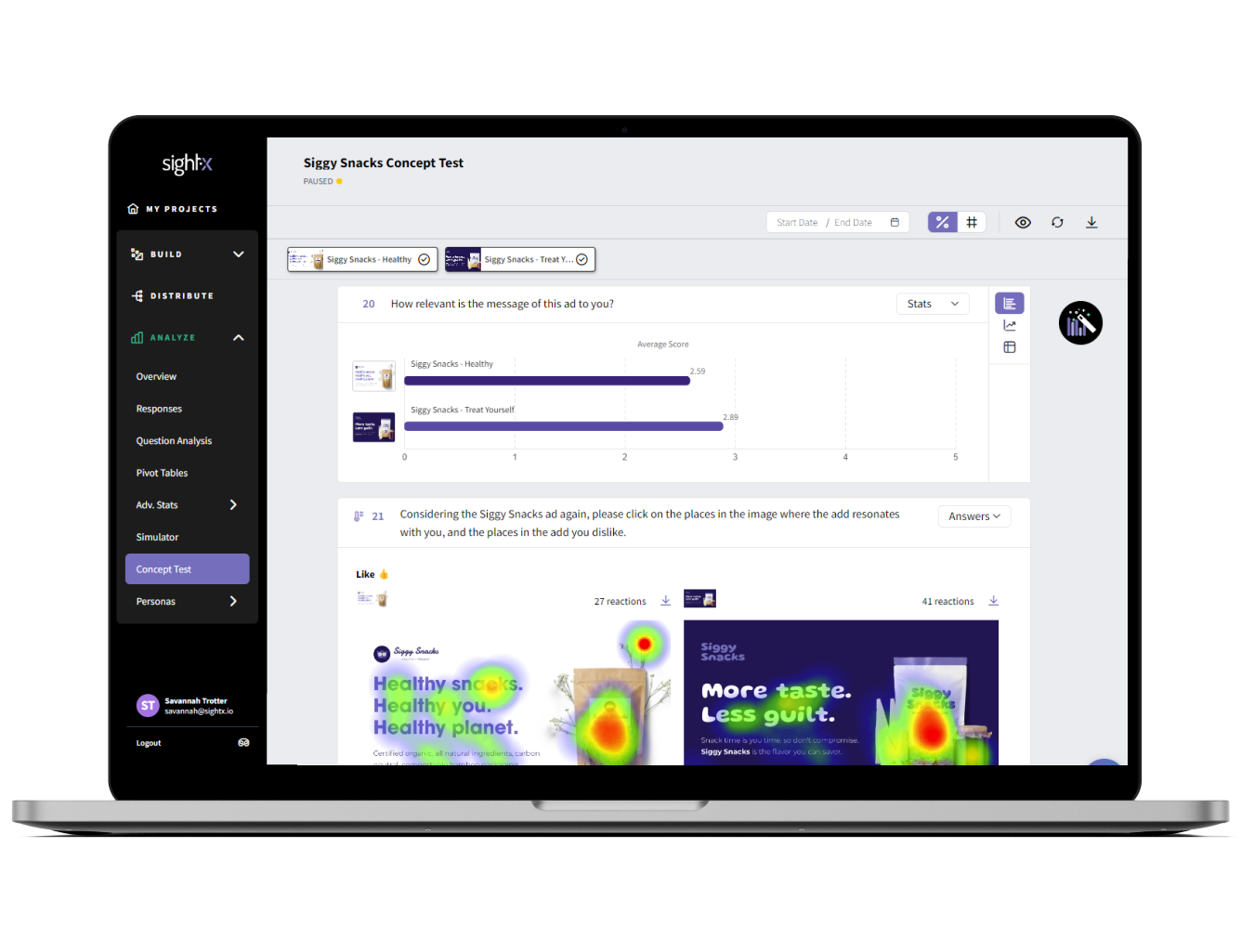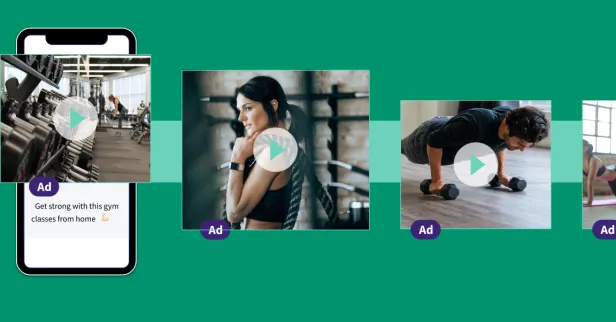Testing, iterating, and developing concepts are essential steps in a process that helps you turn raw ideas into successful products.
Today, we're covering the concept testing process, the role of concept testing, and the tools and tips that can help you achieve optimal results.
What is Concept Development?
Concept development is the process of transforming an initial idea into a detailed and viable product concept. It involves brainstorming, researching, and refining ideas to align with market needs and business goals. This process helps to clarify the vision for a new product or service, identify potential challenges, and set a clear roadmap for further development.
The Concept Development Process
![]() Idea Generation: Brainstorming and gathering initial ideas from various sources. This stage often involves team brainstorming sessions, customer feedback, and market trend analysis to generate a wide range of potential concepts.
Idea Generation: Brainstorming and gathering initial ideas from various sources. This stage often involves team brainstorming sessions, customer feedback, and market trend analysis to generate a wide range of potential concepts.![]() Screening: Evaluating ideas to identify the most promising ones. This involves assessing each idea against feasibility, market potential, and alignment with company goals.
Screening: Evaluating ideas to identify the most promising ones. This involves assessing each idea against feasibility, market potential, and alignment with company goals.![]() Detailed Concept Development: Developing selected ideas into detailed product concepts, including features, benefits, and potential market positioning. This stage may involve creating detailed descriptions, sketches, and preliminary business cases.
Detailed Concept Development: Developing selected ideas into detailed product concepts, including features, benefits, and potential market positioning. This stage may involve creating detailed descriptions, sketches, and preliminary business cases.![]() Market Research: Conducting research to understand market demand and customer preferences. This includes surveys, focus groups, and competitive analysis to gather insights into what potential customers are looking for.
Market Research: Conducting research to understand market demand and customer preferences. This includes surveys, focus groups, and competitive analysis to gather insights into what potential customers are looking for.![]() Prototyping: Creating preliminary models of the product to test and refine. Prototypes range from simple sketches or digital models to fully functional early product versions.
Prototyping: Creating preliminary models of the product to test and refine. Prototypes range from simple sketches or digital models to fully functional early product versions.
How to Use Concept Testing During the Product Development Process
Throughout the concept and product development cycle, concept testing is used to evaluate and refine ideas, concepts, and prototypes. By incorporating concept testing early and throughout the development process, you can ensure your products are on the right track and avoid costly mistakes.
Here is the step-by-step process:
Test Early Ideas
Testing early ideas helps you assess initial reactions and refine concepts before investing significant resources. Early feedback can highlight potential issues and guide the development process. Businesses can use surveys or focus groups to gather preliminary feedback at this stage.
Profile Your Target Customer
Understanding your target customer is crucial for concept development. By profiling your ideal customer, you can tailor your concepts to meet their specific needs and preferences, increasing the likelihood of success. This involves creating detailed customer personas based on demographic, psychographic, and behavioral data.
Evaluate Prototypes
Testing prototypes allows you to gather feedback on the design, functionality, and usability of your product. This stage helps identify any flaws or areas for improvement before moving forward with production. Techniques such as user testing sessions and beta testing are effective ways to collect this feedback.
Refine Your MVP
Your minimum viable product (MVP) is the simplest version of your product that can be released to the market. Concept testing helps you refine your MVP by ensuring it meets customer needs and expectations while remaining cost-effective. Continuous testing and iteration based on user feedback are vital to refining the MVP.
Hone-in on the Right Messaging
Effective messaging is crucial for marketing success. Use concept testing to evaluate different messaging strategies and identify which resonates most with your target audience. A/B testing different headlines, taglines, and calls to action can help determine the most compelling messaging.
Concept Development and Testing in Marketing
Concept development and testing aren't limited to product development; they also play a vital role in marketing. The same development and testing processes help to ensure that creative ideas and copy resonate with the target audience and drive engagement. How exactly can it help? Here are a few use cases:
Refine Creative Ideas
Testing creative ideas ensures your marketing campaigns are engaging and effective. By gathering feedback on various concepts, you can refine your ideas to better connect with your audience. This could involve testing different visual styles, campaign themes, and content formats.
Perfect Copy
Effective copywriting is essential for successful marketing. Concept testing helps you identify the most compelling and persuasive copy for your product marketing campaigns, improving engagement and conversion rates. Testing different versions of ad copy, email subject lines, and website content can reveal which versions perform best.
Ten Tips for Concept Development and Testing
![]() Set Intelligent Goals
Set Intelligent Goals
Define clear, measurable objectives for your concept development and testing efforts to ensure you stay focused and aligned with your business goals. SMART goals (Specific, Measurable, Achievable, Relevant, Time-bound) are particularly effective.
![]() Pick the Right Methodology for Your Needs
Pick the Right Methodology for Your Needs
Choose the appropriate testing methods (e.g., surveys, focus groups, A/B testing) based on your specific needs and resources. Consider factors like budget, timeline, and the nature of the product or concept.
![]() Give Concept Test Respondents Context
Give Concept Test Respondents Context
Provide sufficient background information to respondents so they understand the context of your concepts, leading to more accurate and meaningful feedback. This could include explaining the problem the product solves, its intended use, and target audience.
![]() Write Effective Questions
Write Effective Questions
Craft straightforward, concise, and unbiased questions to gather relevant and actionable insights from your respondents. Avoid leading questions, and ensure that your questions cover all aspects of the concept you wish to test.
![]() Avoid Hidden Triggers of Bias
Avoid Hidden Triggers of Bias
Be mindful of potential biases in your questions and testing process to ensure unbiased and reliable results. This includes avoiding loaded language and ensuring a diverse sample of respondents.
![]() Try Heatmapping
Try Heatmapping
Use heat mapping tools to visually track where respondents focus their attention, helping you understand which elements of your concepts are most engaging. This is particularly useful for web design and user interface testing.
![]() Use Automated Significance Testing to Find Meaningful Insights
Use Automated Significance Testing to Find Meaningful Insights
Leverage automated tools to identify statistically significant insights from your data, ensuring you make data-driven decisions. Automated significance testing can help you quickly identify which variations of your concepts perform best.
![]() Iterate Based on Feedback
Iterate Based on Feedback
Use the insights gained from testing to make iterative improvements to your concepts. Continuous iteration based on user feedback helps to refine and enhance the product or marketing concept.
![]() Engage Cross-Functional Teams
Engage Cross-Functional Teams
Involve different teams (e.g., marketing, design, engineering) in the concept development and testing process. Cross-functional collaboration can provide diverse perspectives and enhance the overall quality of the concept.
![]() Monitor Trends and Competitors
Monitor Trends and Competitors
Stay informed about industry trends and competitor activities. Understanding market dynamics can help you refine your concepts and ensure they are relevant and competitive.
Concept Development & Testing Tools
To streamline your concept development and testing efforts, consider using the following tools:

SightX
SightX is a consumer insight platform that can help you understand customer preferences and refine your concepts effectively. It provides robust data collection and analysis capabilities, making it ideal for both product development and marketing research.
Userpilot
Userpilot specializes in digital products, providing tools to test and optimize your user experience. Its features include in-app surveys, A/B testing, product tracking, user activities, and onboarding, making it a valuable tool for testing your product adoption and refining it to gain customer satisfaction.
Figma
Figma is a powerful design tool that supports concept development by enabling collaborative prototyping and design iteration. Its real-time collaboration features are ideal for teams working on visual and interactive product concepts.
UsabilityHub
UsabilityHub provides a suite of tools for testing design concepts and user interfaces. Features like first-click testing and preference tests help you understand how users interact with your designs and which versions they prefer.
Miro
Miro is an online collaborative whiteboard platform that supports brainstorming, prototyping, and concept development. Its versatile tools and templates facilitate creative idea generation and team collaboration.
Hotjar
Hotjar provides heatmaps, session recordings, and feedback tools to help you understand user behavior and refine digital concepts. Its visual data insights help identify which elements of your design attract the most attention.
Concept Development and Testing with SightX
Integrating effective concept testing into your development cycle can significantly increase the chances of success for your products and marketing campaigns.
At SightX, we infuse the power of generative AI into advanced concept development and testing tools so you can:
![]() Create fully customized price analysis studies and experiments with a prompt.
Create fully customized price analysis studies and experiments with a prompt.![]() Collect data from your target audience.
Collect data from your target audience.![]() Receive fully analyzed and summarized results in seconds, revealing key brand insights and personalized recommendations.
Receive fully analyzed and summarized results in seconds, revealing key brand insights and personalized recommendations.
Let us show you how simple it can be to collect powerful insights.
